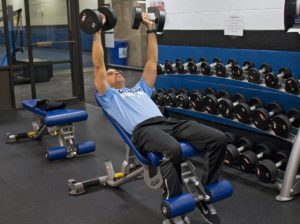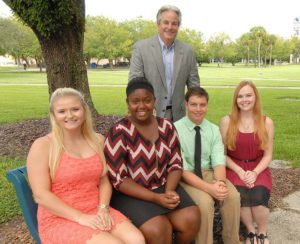Finding work-life balance
By Ellie Ashford
September 28, 2016
Community college leaders have learned to manage stress and put some balance into a lifestyle dominated by a demanding career.
Gregory Williams, president of Odessa College in Texas, exercises for at least 45 minutes every single day – even on Christmas and Thanksgiving and when he’s on the road – and has been doing it for more than 10 years.
“It’s something I look forward to,” Williams says, noting there are mental as well as physical benefits. “It allows me to have a ‘win’ every day. That’s one box I know I can check every day.”
He views his daily workout as an escape from the demands of a stressful job, although sometimes he uses that time to mull over a problem.

He’s seen the results at Odessa, which is a finalist for the 2017 Aspen Prize. In his 10 years as president, Williams can point to solid gains in student success and retention rates.
Greg Hamann, president of Linn-Benton Community College in Oregon, also believes exercise is critical in maintaining a work-life balance. His main workout is running, but he also does lifting and cycling. He tries to get up every day at 4:30 a.m. and spends the early hours meditating, reading the Bible, having a cup of coffee and checking out the newspaper.
“That alone time – to be physically and mentally still – is incredibly important to me,” says Hamann, who also serves on the AACC board of directors.
There are times when the stress of the job can be overwhelming, he says. “It’s a little bit like going into battle.” He believes his quiet time in the morning helps him deal with that, adding: “Our capacity to manage stress is greatly enhanced when we believe in what we’re doing.”
Adventures with family
“I see myself as a life adventurer,” says E. Ann McGee, president of Seminole State College of Florida, “I love to travel, I love to hike and I love to be outside.” A five-mile hike on the beach “is a great way to clear my head and think about what’s ahead of me.”
This year, she spent the month of June on a 150-mile hike through Italy and Switzerland with a few friends and nieces, and during the Labor Day weekend, she took three great nephews to Colombia.
Building long vacations into a president’s schedule requires good time management, McGee says, but the end result is more energy and more productivity back on the job.
“My goal is to always max out the experience of being president – whether it’s the personal or professional part of it,” she says.
Meditation brings clarity
James Henningsen, president of the College of Central Florida, brought meditation into his daily life after a couple of health scares that landed him in the emergency room.
In the early 2000s, he was overseeing student affairs as a vice president at another college and was “working like a dog” to get a new computer system up and running when the college decided to take the system live before it was ready, he recalls.
At one point, Henningsen collapsed from a severe migraine headache that he believes was stress related. A few years later, he was hospitalized for extremely high blood pressure, a condition that runs in his family. “That was a wakeup call,” he says.

“The demands of being a president are huge,” Henningsen says. “I’ve seen so many people who are just about work, work, work. When you burn the candles at both ends, that creates stress.”
Finding an outlet
When he started meditation, he was skeptical but found “you can do it at your desk. You don’t have to sit in a funky lotus position.”
He sits quietly in his office every day for about 15 to 20 minutes – with the door closed and the phone turned off – listening to nature sounds. When he meditates after a morning of challenging meetings, “I feel completely recharged, with positive energy for the rest of the day,” he says.
Henningsen encourages his staff to take up meditation or yoga and there are plans for a meditation room for employees. A faculty member has received a grant to create a pilot program to test the theory that mindfulness helps reduce test anxiety and increase performance among students.
“You’ve got to find an outlet or the job will eat you up with time demands and work demands, and that will lead to health problems,” he says. “You have to realize you’re human.”
Read the full article in Community College Daily.
Continue the conversation on our LinkedIn group.
Photo credit: E. Ann McGee, president of Seminole State College of Florida, finds travel an energizing experience.


